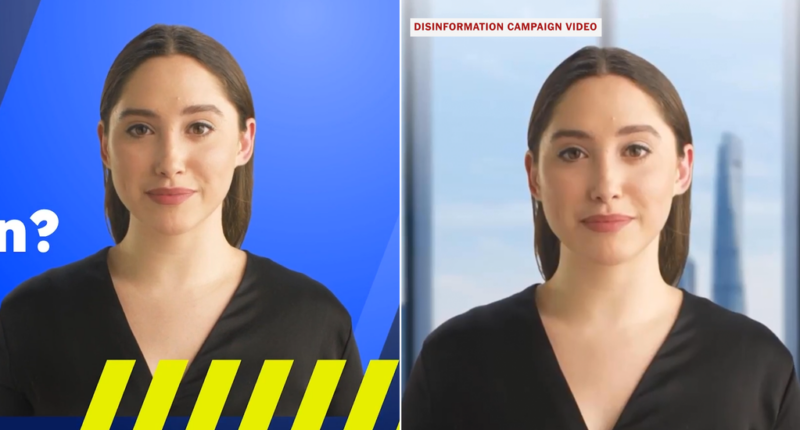
Although the usage of deepfakes in the recently discovered pro-China disinformation campaign was ham handed, it opens a new chapter in information warfare. In recent weeks, another video using similar A.I. technology was uncovered online, showing fictitious people who described themselves as Americans, promoting support for the government of Burkina Faso, which faces scrutiny for links to Russia.
A.I. software, which can easily be purchased online, can create “videos in a matter of minutes and subscriptions start at just a few dollars a month,” Mr. Stubbs said. “That makes it easier to produce content at scale.”
Graphika linked the two fake Wolf News presenters to technology made by a British A.I. company called Synthesia, which is based above a clothing shop in London’s Oxford Circus.
The five-year-old start-up makes software for creating deepfake avatars. A customer simply needs to type up a script, which is then read by one of the digital actors made with Synthesia’s tools.
A.I. avatars are “digital twins,” Synthesia said, that are based on the appearances of hired actors and can be manipulated to speak in 120 languages and accents. It offers more than 85 characters to choose from with different genders, ages, ethnicities, voice tones and fashion choices.
One A.I. character, named George, looks like a veteran business executive with gray hair and wears a blue blazer and a collared shirt. Another, Helia, wears a hijab. Carlo, another avatar, has a hard hat. Samuel wears a white lab coat like the ones worn by doctors. (Customers can also use Synthesia to create their own avatars based on themselves or on others who have granted them permission.)
The company’s software is mostly used by customers for human resources and training videos, where an unpolished production quality is sufficient. The software, which costs as little as $30 a month, produces videos in minutes that could otherwise take several days and would require hiring a video production crew and human actors.
The entire process is “as easy as writing an email,” Synthesia said on its website.
How a character typically appears
Here are examples of an A.I.-generated character from Synthesia being used for a variety of marketing and similar campaigns.
Source: | This article originally belongs to Nytimes.com









